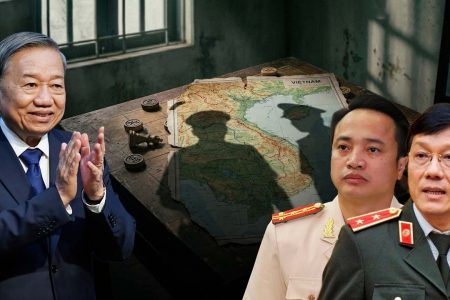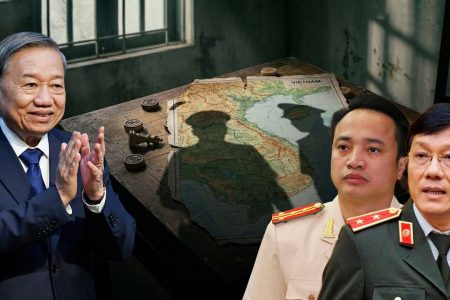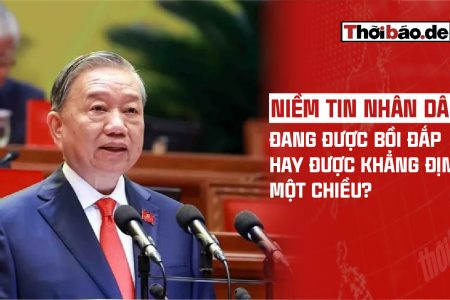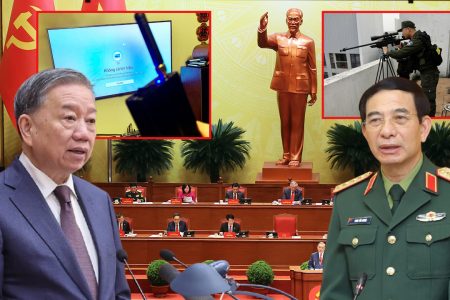
China is still threatening in the South China Sea
While the whole world is still focusing on the military situation in Donbas, Ukraine, China is continuing to strengthen its strength and „show off its fangs and claws“ in the South China Sea (Vietnam calls it the East Sea).
Chinese media recently reported that the country’s stealth fighters have begun patrolling the East and South China Seas within the framework of regular training missions. This statement was made by Ren Yukun, head of the disciplinary inspection and supervision team and a member of the party committee of the Aviation Industry Corporation of China (AVIC). He added that these patrols were carried out after the J-20s switched to using „domestic developed engines.“ Initially, this type of fighter was equipped with Russian-made Saturn AL-31FN series engines.
Information about the J-20 patrol came at a time when just last month, an American F-35 fighter jet and a Chinese J-20 had a very close encounter in the East China Sea. US Pacific Air Force Commander Kenneth Wilsbuch said the US pilots were deeply impressed by the command and control system of the Chinese J-20 fighter jet. He said it is still too early to talk about how China will deploy the J-20.
Chinese experts say the J-20 is a combination of the US F-22 and F-35. This type of aircraft will not be detected by radars. However, it is still unclear in fact, whether this type of Chinese fighter has the same air power and ground firepower as the US F-35. According to AVIC, the J-20 fighter is currently using domestically produced engines, which have greater power. Chinese military experts believe that with this latest upgrade, China’s fighter jets will now possess the capability of supersonic aircraft and will be able to perform many of the above acrobatic maneuvers.
China has long touted the capabilities of the Chengdu J-20 stealth fighter jet since it was first introduced in 2011. The fifth-generation Optimal Fighter descended from the China J-XX program in the 1990s, entered service in March 2017, and the first J-20 combat unit was created just a year later.
Currently, the People’s Liberation Army (PLA) has not disclosed the number of its available J-20s, but many think the number is around 150.
What message does this move by China?
Experts say that China’s deployment of the J-20 shows that China wants to send several messages: First, its greater confidence in its military capabilities; the second is Beijing’s warning to other countries that are involved in disputes with China in these two water.
The fact that China sent this most powerful aircraft to conduct patrols in the South China Sea right next to Taiwan in the midst of the war in Ukraine is an attempt to intimidate the island. The move is also expected to increase tensions in an area already rife with dangerous weapons. Not only that, but China will be able to attack the military bases of Taiwan’s allies such as the US and Japan.
In addition, the presence of this type of aircraft in the South China Sea risks increasing China’s tensions with Taiwan, Singapore, Vietnam, and the Philippines. This is the fifth generation of fighter aircraft, and other than China, no country in the South China Sea uses such advanced aircraft.
Therefore, China’s J-20 will completely overwhelm the weaker air forces of Southeast Asian countries involved in the South China Sea dispute. However, it is possible that China will only deploy the J-20 in cases where Beijing considers it to pose the greatest threat to it because deploying the J-20 is very expensive and the fighter itself is of such great value that China would not want to lose.
Some experts suggest that, in order to destroy the relatively weaker air forces in the region, China may choose to use air warfare rather than risk using its most advanced fighters. Even without the J-20, China still has an advantage over the air forces of the other claimants when it comes to the number of fighters. China may choose to conduct continuous and enhanced patrols in the airspace of contested areas in the South China Sea, forcing the air forces of the claimants to respond at a scale beyond their capabilities. This exposes pilots of disputing countries to stress and fatigue, which increases the likelihood of miscalculation and increases the risk of equipment loss. This China has done with respect to Taiwan throughout 2021.
Will Russia help China?
China has tried to emulate and copy technologies from other countries for its weapons production. A huge weakness of China in its weapons production is its ability to manufacture engines.
Not long ago, China got into trouble with Thailand when it could not deliver two Yuan-class submarines to Thailand on time according to the contract. The reason is that a German company did not supply submarine engines to China due to concerns about violating the export ban on German weapons products. Meanwhile, China has not been able to build submarine engines with the desired design.
The same holds true for jet engines. China has long faced difficulties in its plan to produce high-quality jet engines for its air force – a key bottleneck in the country’s air force modernization program. During the 1990s and 2000s, China attempted to copy certain versions of Russian engines but produced inferior versions with very low engine durability.
Meanwhile, Russia also knows that China stole their Su-27 engine design and turned it into an unlicensed copy of Beijing’s own design. Moscow does not sell fighter engines separately, which makes it extremely difficult for China to turn Russian engine models into its own version.
However, many people expressed concern that today, because Russia is entangled in the issue of invading Ukraine, almost the entire West has isolated and embargoed, and punished Russia. In that context, Russia’s only reliable support is China. Therefore, the possibility that Russia has to trade-off by providing jet engine manufacturing technologies to China. This will most likely happen.
If Russia transfers jet engine manufacturing technology to China, this will give China more power to dominate in the South China Sea.
A US military expert recently said that the risk of China attacking Vietnam in the Truong Sa (Spratlys) is much greater than attacking Taiwan, as an effect of the Ukraine war.
Faced with such a situation, Vietnam should have taken a move or a policy to adapt to the fluctuations of the times. However, the Vietnamese leader still calmly „selfies“ as Mr. Nguyen Phu Trong said in a meeting with the US Ambassador in Hanoi yesterday that “Vietnam has highest international credibility now thanks to the correct domestic and foreign policy.“
Even the fact that Russia „sells out“ Vietnam when releasing information about Russia-Vietnam joint military exercises as „malicious“ also puts Vietnam in a difficult situation. While the war in Ukraine has shown the limitations in Russian weapons and military doctrine, many Vietnamese leaders still „cry“ to embrace Russia, even though Russia has stated that it always supports China’s position regarding the South China Sea issue.
Vietnam needs to make many changes in both its foreign and defense doctrine to protect its interests in the South China Sea.
Thoibao.de (Translated)


























